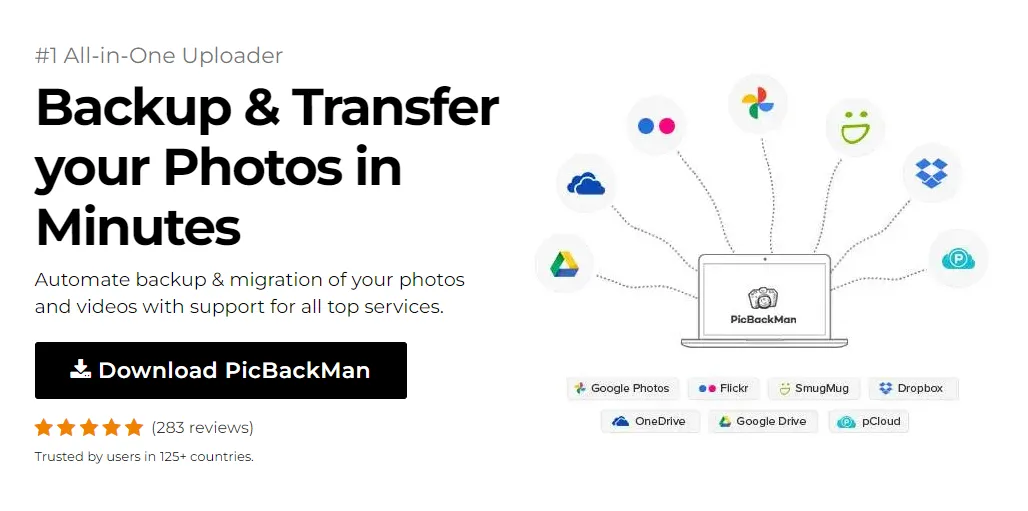
How to Prevent OneDrive from using Network Bandwidth?


In today's digital age, cloud storage services like OneDrive have become indispensable tools for individuals and businesses alike. However, while these platforms offer convenience and accessibility, they can also consume significant network bandwidth, potentially impacting internet speed and performance. Understanding how to prevent OneDrive from using network bandwidth is essential for optimizing your online experience and ensuring smooth operations. In this comprehensive guide, we'll explore various strategies and techniques to minimize the impact of OneDrive on your network resources.
Understanding OneDrive Bandwidth Usage
Before delving into prevention strategies, it's crucial to grasp how OneDrive utilizes network bandwidth. OneDrive constantly syncs files between your device and the cloud, ensuring that your data is up to date and accessible from anywhere. This synchronization process involves uploading newly created or modified files to the cloud and downloading changes made on other devices. Consequently, OneDrive's background operations can consume bandwidth, particularly in environments with limited internet connectivity.
To prevent OneDrive from monopolizing network resources, users must employ proactive measures to manage its behavior effectively.
How Does OneDrive Affect Network Bandwidth?
OneDrive's impact on network bandwidth primarily stems from its synchronization activities. When files are added, modified, or deleted in a synced OneDrive folder, the application initiates data transfers to ensure consistency across devices. Additionally, background processes such as file indexing and metadata updates contribute to bandwidth consumption.
Strategies to Prevent OneDrive from Using Network Bandwidth
Now that we've established the significance of managing OneDrive's bandwidth usage, let's explore actionable strategies to mitigate its impact effectively.
1. Adjust OneDrive Sync Settings
OneDrive offers granular control over synchronization settings, allowing users to tailor its behavior according to their preferences and network constraints. By adjusting sync frequency, bandwidth usage, and file types, you can optimize OneDrive's performance while minimizing its impact on network resources.
How to Adjust OneDrive Sync Settings:
- Open the OneDrive application on your device.
- Access the settings menu and navigate to the "Network" or "Sync" tab.
- Select the desired sync options, such as sync frequency and bandwidth utilization.
- Customize file types and folders for selective synchronization to prioritize essential data.
2. Schedule Syncing During Off-Peak Hours
To avoid network congestion and optimize bandwidth utilization, consider scheduling OneDrive syncing during off-peak hours. By syncing files during periods of low internet traffic, you can minimize disruptions to other online activities and ensure faster upload and download speeds.
How to Schedule OneDrive Syncing:
- Identify off-peak hours based on your internet usage patterns and local network conditions.
- Access OneDrive settings and navigate to the scheduling or advanced options.
- Set specific time intervals for automatic syncing, preferably during nights or weekends.
- Monitor sync activity to ensure completion without interruptions.
3. Limit Upload and Download Speeds
OneDrive allows users to cap upload and download speeds, preventing the application from consuming excessive bandwidth during synchronization. By imposing speed limits, you can maintain network stability and prioritize essential tasks without compromising data accessibility.
How to Limit OneDrive Upload and Download Speeds:
- Access OneDrive settings and navigate to the network or bandwidth tab.
- Locate the options for upload and download speed limits.
- Specify the desired maximum speeds to restrict OneDrive's bandwidth usage.
- Monitor network performance to ensure optimal balance between speed and resource allocation.
4. Optimize File Size and Formats
Large files and media-rich content can significantly impact OneDrive's bandwidth usage, especially during synchronization. To minimize network overhead, consider optimizing file sizes and formats before uploading them to the cloud. Compressing files, converting media to more efficient formats, and utilizing compression algorithms can reduce data transfer requirements and accelerate synchronization processes.
How to Optimize File Size and Formats for OneDrive:
- Identify large files and media assets consuming excessive storage space.
- Utilize compression tools or software to reduce file sizes without compromising quality.
- Convert media files to formats with better compression efficiency, such as MP4 for videos and JPEG for images.
- Implement automated workflows or batch processing to streamline optimization tasks.
5. Utilize Differential Syncing
Differential syncing, also known as delta synchronization, enables OneDrive to transfer only the portions of files that have changed since the last sync operation. By leveraging differential syncing mechanisms, OneDrive minimizes data transfer requirements and reduces overall bandwidth consumption, particularly for large files or frequent updates.
How Differential Syncing Works:
- When a file is modified, OneDrive detects the changes and generates a "delta" or incremental update.
- Instead of transferring the entire file, OneDrive only syncs the delta, consisting of the modified sections.
- This efficient syncing method minimizes bandwidth usage and accelerates synchronization processes, especially for large files or frequent updates.
6. Leverage Offline Access and Cached Files
OneDrive offers offline access and cached file functionality, allowing users to access synced content without requiring continuous internet connectivity. By leveraging offline access, you can work seamlessly on documents and files stored in OneDrive, reducing reliance on real-time synchronization and conserving network bandwidth.
How to Use Offline Access and Cached Files in OneDrive:
- Enable offline access for essential files and folders in OneDrive settings.
- Sync cached copies of frequently accessed files to your device for offline use.
- Work on documents locally, and OneDrive will automatically sync changes once an internet connection is available.
- Optimize offline access settings to balance storage usage and accessibility requirements.
Quick Tip to ensure your videos never go missing
Videos are precious memories and all of us never want to ever lose them to hard disk crashes or missing drives. PicBackMan is the easiest and simplest way to keep your videos safely backed up in one or more online accounts. Simply Download PicBackMan (it's free!), register your account, connect to your online store and tell PicBackMan where your videos are - PicBackMan does the rest, automatically. It bulk uploads all videos and keeps looking for new ones and uploads those too. You don't have to ever touch it.
FAQs (Frequently Asked Questions)
Q: Can I pause OneDrive sync to conserve bandwidth?
A: Yes, OneDrive allows users to temporarily pause sync operations to conserve bandwidth or prioritize other tasks. Simply access the OneDrive settings menu and select the option to pause syncing.
Q: Does OneDrive consume bandwidth when idle?
A: While OneDrive's background processes may consume minimal bandwidth when idle, the majority of data transfer occurs during synchronization activities triggered by file changes or updates.
Q: Can I monitor OneDrive's bandwidth usage?
A: Yes, OneDrive provides built-in tools and reports for monitoring bandwidth usage and sync activity. Users can access these features from the OneDrive settings or dashboard.
Q: Will restricting OneDrive's bandwidth affect overall performance?
A: Limiting OneDrive's bandwidth usage may result in slower sync speeds, especially during peak periods. However, proper optimization and scheduling can mitigate any adverse effects on overall performance.
Q: Are there third-party tools for optimizing OneDrive bandwidth usage?
A: Yes, several third-party applications and utilities offer advanced features for optimizing OneDrive's bandwidth usage, including bandwidth throttling, scheduling, and synchronization management.
Q: How does OneDrive prioritize sync operations during network congestion?
A: OneDrive employs intelligent algorithms to prioritize sync operations based on factors such as file size, importance, and user activity. During network congestion, critical files and recent changes are prioritized to ensure timely synchronization.
Conclusion
Effectively managing OneDrive's bandwidth usage is essential for optimizing network performance and ensuring uninterrupted productivity. By implementing the strategies outlined in this guide, you can minimize OneDrive's impact on network resources while maximizing efficiency and reliability. From adjusting sync settings to leveraging offline access and cached files, proactive management techniques empower users to harness the full potential of cloud storage without compromising network stability. Stay tuned for more expert insights and best practices on navigating the digital landscape with confidence.
Backup & Transfer your Photos in Minutes
Automate backup & migration of your photos & videos with support for all top services.
Trusted by users in 125+ countries.










